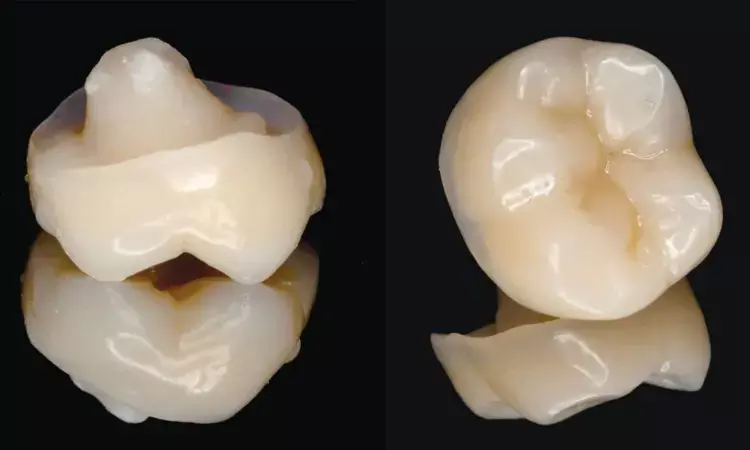- Home
- Medical news & Guidelines
- Anesthesiology
- Cardiology and CTVS
- Critical Care
- Dentistry
- Dermatology
- Diabetes and Endocrinology
- ENT
- Gastroenterology
- Medicine
- Nephrology
- Neurology
- Obstretics-Gynaecology
- Oncology
- Ophthalmology
- Orthopaedics
- Pediatrics-Neonatology
- Psychiatry
- Pulmonology
- Radiology
- Surgery
- Urology
- Laboratory Medicine
- Diet
- Nursing
- Paramedical
- Physiotherapy
- Health news
- Fact Check
- Bone Health Fact Check
- Brain Health Fact Check
- Cancer Related Fact Check
- Child Care Fact Check
- Dental and oral health fact check
- Diabetes and metabolic health fact check
- Diet and Nutrition Fact Check
- Eye and ENT Care Fact Check
- Fitness fact check
- Gut health fact check
- Heart health fact check
- Kidney health fact check
- Medical education fact check
- Men's health fact check
- Respiratory fact check
- Skin and hair care fact check
- Vaccine and Immunization fact check
- Women's health fact check
- AYUSH
- State News
- Andaman and Nicobar Islands
- Andhra Pradesh
- Arunachal Pradesh
- Assam
- Bihar
- Chandigarh
- Chattisgarh
- Dadra and Nagar Haveli
- Daman and Diu
- Delhi
- Goa
- Gujarat
- Haryana
- Himachal Pradesh
- Jammu & Kashmir
- Jharkhand
- Karnataka
- Kerala
- Ladakh
- Lakshadweep
- Madhya Pradesh
- Maharashtra
- Manipur
- Meghalaya
- Mizoram
- Nagaland
- Odisha
- Puducherry
- Punjab
- Rajasthan
- Sikkim
- Tamil Nadu
- Telangana
- Tripura
- Uttar Pradesh
- Uttrakhand
- West Bengal
- Medical Education
- Industry
Does material of endocrowns matter for successful restoration of endodontically treated teeth? Study draws comparison

Iran: In a groundbreaking study, researchers have delved into the effectiveness of CAD/CAM endocrowns crafted from different materials over two years. The study, published in the Journal of Dentistry, has shed light on the performance and durability of endocrowns made from three distinct materials: feldspathic, zirconia lithium silicate, and lithium disilicate.
The latest study stated, "With endocrowns made of the mentioned ceramics showing a high durability and success rate in the short term, they can be considered a safe choice for endodontically restoring treated teeth." The researchers noted that caries were the most common reason for the failure of the restorations, and type of restoration or tooth type had no role to play in restoration failure. 89.36% of restorations were identified as clinically excellent or good.
Endocrowns are an essential restorative option for extensively damaged teeth, offering functional and aesthetic benefits. However, the choice of material for these restorations can significantly impact their clinical performance and longevity. Faezeh Atri, associate professor, Tehran University of Medical Sciences, Tehran, Iran, and colleagues aimed to demonstrate the clinical efficacy of endocrowns made of zirconia lithium silicate, feldspathic, and lithium disilicate ceramics using a chairside CAD/CAM system.
For this purpose, the researchers compared the clinical outcomes of 141 endocrown restorations in the posterior teeth of 85 patients in a two-year follow-up. Restorations' efficacy was evaluated in three aspects: biological response, esthetics, and function, with the aid of the FDI guideline, and presented as descriptive analyses.
Based on the study, the researchers reported the following findings:
- The type of restorations (zirconia lithium silicate, feldspathic, and lithium disilicate) and underlying teeth (molars and premolars) play no part in restorations’ failure.
- Recurrence of caries is primarily responsible for the failure of the endocrowns.
- Secondary caries and radiolucency were observed in four teeth (2.83%).
- The clinical efficacy of 89.36% of restorations fell into the category of “clinically excellent” and “clinically good.”
- 7.09% of restorations were classified as “clinically sufficient/satisfactory,” and only 3.54% of restorations needed replacement due to having “clinically unsatisfactory” and “clinically poor” quality.
"Endocrowns made of several ceramics have been proven reliable restorations for endodontically treated premolars and molars," the researchers wrote.
With further research and advancements in material science, restorative dentistry continues to evolve, offering patients increasingly sophisticated treatment options tailored to their specific needs and preferences.
The study represents a significant contribution to the dental community, providing valuable insights that will inform clinical decision-making and enhance the quality of patient care in the realm of endocrown restorations.
Reference:
Jalali, S., Asgari, N., Pirooz, P., Younespour, S., & Atri, F. (2024). Comparison of Clinical Efficacy of CAD/CAM Endocrowns Made of Feldspathic, Zirconia Lithium Silicate, and Lithium Disilicate: A Two-year Mixed Cohort Study. Journal of Dentistry, 105019. https://doi.org/10.1016/j.jdent.2024.105019
Dr Kamal Kant Kohli-MBBS, DTCD- a chest specialist with more than 30 years of practice and a flair for writing clinical articles, Dr Kamal Kant Kohli joined Medical Dialogues as a Chief Editor of Medical News. Besides writing articles, as an editor, he proofreads and verifies all the medical content published on Medical Dialogues including those coming from journals, studies,medical conferences,guidelines etc. Email: drkohli@medicaldialogues.in. Contact no. 011-43720751


